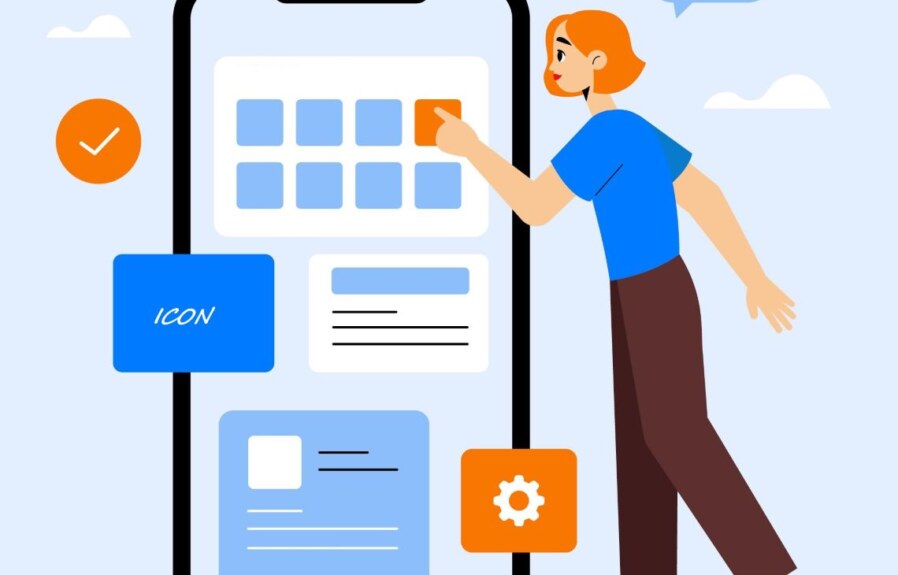According to the Mobile Apps Market 2020-2027 report by Global Industry Analysts, the market is to grow at a CAGR of 25.5% to reach $20.7bn by 2027. This is a 5x growth in comparison with the base year of 2020 with the market size of $4.2bn. So how do healthcare app developers manage to thrive? The answer is, they rapidly adapt to the situation to deliver in-demand solutions.
Table of Contents:
Curiously, these are not only remote patient monitoring apps or telemedicine solutions but also coronavirus research tools and assistants. Below are some inspiring examples covering different aspects of this fight against the novel virus.
Powering alternative diagnostic methods
COVID-19 diagnostics is not a simple matter. It involves complex equipment and advanced computer vision tools, which are not always available at medical facilities, and lab test kits that may be scarce given the scale of the pandemic.
With these two diagnostic complications in mind, the researchers from the University of Cambridge (UK) decided to offer an easy-to-use alternative — the coronavirus diagnostics by the sound of one’s voice.
The COVID-19 Sounds App collects the sounds of voice, breathing, and coughing along with some demographic data. The app also asks if users were tested positive for COVID-19. Aiming to collect a large sample data set, the researchers welcome any interested persons to participate. Even if a patient is not infected, their sample will make a reference point for some respiratory patterns. The researchers believe a dataset of breathing sounds may help find connections with other diseases, too.
Diagnostics by voice is not the only alternative method around. The researchers from the University of Florida (USA) have developed a handy tool for diagnosing COVID-19 by saliva.
The tool is a set of a mobile app and an attachment to a smartphone that has a cassette with a stabilizer inside. The app switches on the smartphone camera to activate the detection system. The results are available in about 15 minutes.
Apart from the novel coronavirus, CLIP-CAM can detect malaria and anemia. This low-cost tool may allow small practices to run rapid diagnostics without any lab involvement. This may help solve the issue of the lack of COVID-19 test kits.
Bringing prevention to the next level
Coronavirus prevention is a complex effort requiring well-coordinated work of clinicians, communities, media, and government agencies. However, people may unintentionally violate the established prevention measures and increase their exposure risk.
This is what the Trident system may help with. Developed by IoT researchers from Warren B. Nelms Institute for the Connected World (USA), the system uses two connected wearables (a wristband and a mask), a mobile app for alerts, and a secure cloud for data storage.
Powered by machine learning algorithms, the wristband continuously measures the user’s temperature, the temperature of the environment, and the user’s activity level with a specific sensor. This helps cross out these two hampering factors in temperature readings and detect potential infection timely. Besides, the smart device may also contribute to prevention for healthy users. In case they accidentally violate the social distancing policy, the band starts buzzing.
As for the mask, it works as a powerful prevention means. When the in-built sensor identifies a COVID-19-size particle in the air, the mask blows out a water mist. The mist pushes the harmful particles away and clings on to them, making the particles fall down because of their increased weight. Such a mask may make a valid solution for professionals working in crowded places with high exposure risks.
As we can see, the system may help with ensuring prevention measures. What’s more, the Trident system can also be useful in treatment: it can help monitor hospitalized patients and make well-grounded predictions about their condition and/or the disease progression.
Scaling up epidemiologic research
When the scale of the virus became clear, mobile app vendors teamed up with healthcare professionals to create special COVID-19-related apps for symptom tracking, remote monitoring, contact tracing, and more. Such apps are useful for individuals, as they offer some degree of personalization by assessing the likelihood of being infected, relying on the data they provide. However, they don’t have much to contribute on a broader scale.
To bridge this gap and power global epidemiologic collaboration, UK and US researchers have set up the Coronavirus Pandemic Epidemiology (COPE) Consortium. COPE unites multi-field researchers to study the pandemic in a multi-faceted patient population, applying their expertise in big data and epidemiology.
To drive epidemiological research, the team created the COVID Symptom Study app and launched it in the UK and the US. This mobile app allows users to provide their basic demographic and clinical information along with exhaustive data on one’s symptoms, even such specifics as cough frequency. Moreover, it provides a separate module for healthcare professionals, allowing them to input data on their patient interaction intensity and potential exposure.
Do the efforts pay off? Now that the user base has overcome 2 million people, the app allows researchers to build valid epidemiological models. Such a model helped predict a spike in COVID-19 cases in southern Wales (UK) a week in advance based on the increase in symptom reports. This real-time symptom tracking might help authorities to prepare for spikes and manage resource allocation as well as quarantine recommendations more efficiently.
Wrap-up
In the present situation of uncertainty and turmoil, mobile technologies have often made part of the rare success stories. Moreover, these technologies have entered the medical research field, too.
Judging by the cited examples, the mobile tech flexibility and compatibility with other technologies may be the reasons for this uptake. Thanks to their characteristics, mobile health apps may adapt to many real-life situations and bring much-needed solutions timely.


